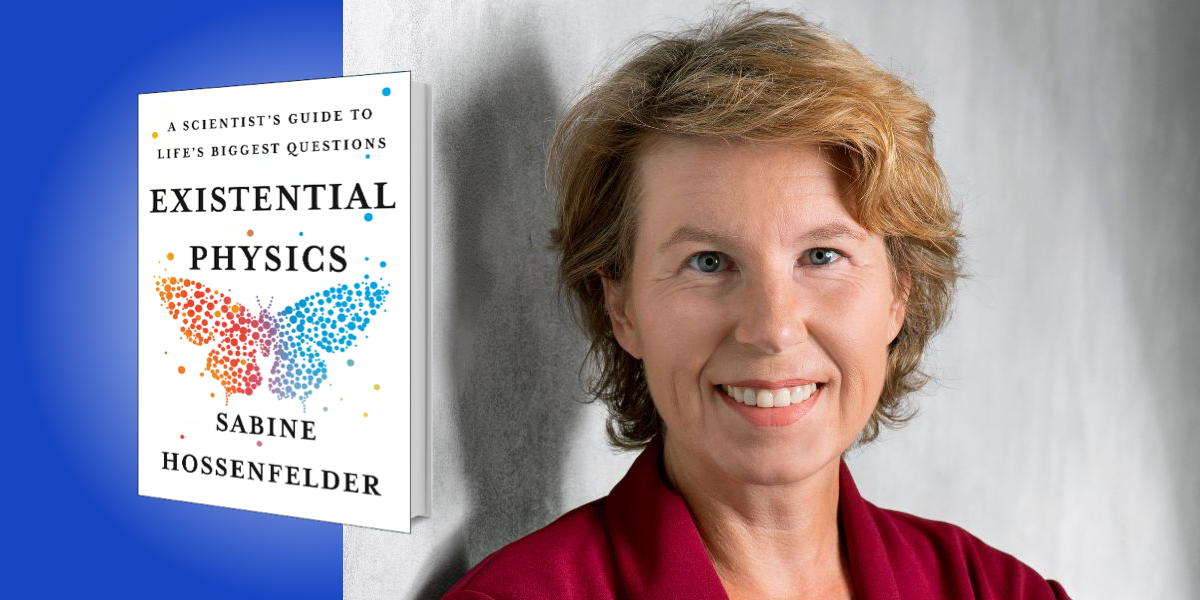Sabine Hossenfelder is a theoretical physicist who researches quantum gravity. She is a research fellow at the Frankfurt Institute for Advanced Studies and creator of the YouTube channel Science without the Gobbledygook.
Below, Sabine shares 5 key insights from her new book, Existential Physics: A Scientist’s Guide to Life’s Biggest Questions. Listen to the audio version—read by Sabine himself—in the Next Big Idea App.
1. A positive perspective on physics.
A lot of people have a bad start with physics in school, where they get to thinking it’s just about how batteries work, planetary orbits, nuclear decay, and that kind of thing. But physics is our best tool for finding answers to the big questions of our existence, like why do we only get older and not younger, are there other universes, will we ever know everything, do we have free will, how did the universe begin, how will it end, can particles think, and so on. Physics is so much more than what we learn in school.
When we try answering the big questions of existence, we generally have three options: religion, philosophy, and physics. Of those three, I think physics has made the biggest progress in the past century. It’s something that physicists don’t talk about often, probably for the historical reasons why scientists wanted to keep their distance from religion.
“Physics is so much more than what we learn in school.”
But the downside of staying away from the big questions of our existence is that it keeps us distanced from our humanity. It’s likely part of the reason scientists in general (and physicists in particular) are perceived as cold and technocratic, because they seem minimally concerned with those big life questions. I think physicists do care and physics can’t escape existential questions.
2. Physics is more than a profession—it’s a source of inspiration.
I spend a lot of time debunking science news. For example, if there’s a headline saying that the quantum internet will allow us to send information faster than light, then I’ll be there to explain that no, it won’t. Or a headline claiming contact to parallel universes—I’ll say no, we haven’t. And so on.
Though I consider my debunking really important, it’s also kind of depressing. It gives the impression that physics only tells us what is not possible. But there is another side to the picture because physics also opens our minds to what is possible. In many cases, it’s physics that lets us imagine these possibilities in the first place. Think about how often you see authors and screen writers borrow from physics: black holes, time slowing down, parallel universes, worm holes, teleportation. Physicists don’t appreciate this mind-opening and inspiring side of physics enough.
On the whole, science communication today is too one-sided. It’s stuck in the lecture format of experts talking at non-experts. Science communication should pay more attention to social integration, meaning considering people who are interested in science but are not themselves scientists and just like to meet, talk, and share experiences. This can be done online to some extent, but there are very few opportunities for this in real life. On this count, religion is doing much better because it is so much better integrated into people’s lives. Just think about all of the social events that churches organize. Scientists can learn something from the churches.
3. Information (probably) can’t be destroyed.
The laws of nature reconfigure the matter in the universe into different arrangements, but from the configuration at any one time you can tell what the earlier configuration was—at least theoretically. In practice, you usually can’t do it, because you don’t have all of the details. So, if someone dies, then all the information about them disperses into a form that you can no longer communicate with. But in principle the details cannot get destroyed—they are still present in the correlations between atoms and the quanta of light and they slowly spread throughout the solar system and the entire universe.
“The past is not the same as the future, although why this is so is a big, open problem in the foundations of physics.”
This is a consequence of what we know about the laws of nature. They are what we call time reversible. This means that you can run forward in time, but also backward in time—like a movie. Though (like in a movie) if you run it backward, it will look odd. The past is not the same as the future—this would be called a time-reversal invariance. The past is not the same as the future, although why this is so is a big, open problem in the foundations of physics.
There are two cases that could possibly be exceptions to the conservation of information, cases where we don’t yet know the answer for sure. One is stuff that falls into a black hole, and the other is a measurement in quantum mechanics. In both cases, some physicists think that information might be destroyed and others think the opposite. I personally think that in these two cases information is also preserved.
4. For all we currently know, the past still exists.
It’s one of the consequences of Einstein’s theories of space and time—sometimes called the block universe. The universe doesn’t come into being, it just sits there like a block already in place. That’s because, according to Einstein, it’s impossible that everyone agrees on which moment is “now.” Odd as it sounds, every moment could be “now” for someone. Your past could be somebody else’s present, and why should somebody else’s present be any less real than yours? This is why we think the past exists the same way as the present.
When it comes to the future, it’s a little more difficult because of quantum mechanics. In quantum mechanics a measurement introduces a random element and you can only predict the probability of a measurement outcome, not what the outcome will be. So, in quantum mechanics the future isn’t entirely determined by the past.
“Your past could be somebody else’s present, and why should somebody else’s present be any less real than yours?”
But for where the past is concerned, that it still exists is a rather standard textbook argument based on Einstein’s theories. It’s one of those things we learn as students in physics and when we hear it for the first time we can’t believe that it’s correct. Then we understand it’s correct, get used to it, and forget how amazing this and other facts were when upon first learning them.
5. The distinction between unscientific and ascientific.
This distinction was proposed by my friend Tim Palmer. It’s like the distinction between atheist and agnostic. An atheist does not believe that God exists, an agnostic has no opinion about whether God exists or not (a neutral position). We call something unscientific when it does not follow scientific methodology. By ascientific, I mean something that science says nothing about.
For example, planning your day based on what the horoscope says is unscientific. The idea that other universes exist that we cannot interact with is ascientific, because science can’t tell us whether they exist, but it also can’t tell us that they don’t exist. It’s not unscientific to believe in those other universes.
The distinction matters. Ascientific ideas should have a place in our lives, brains, and hearts. They should not be thrown out with those ideas that go against science simply because our vocabulary doesn’t distinguish between the two.
To listen to the audio version read by author Sabine Hossenfelder, download the Next Big Idea App today:
































